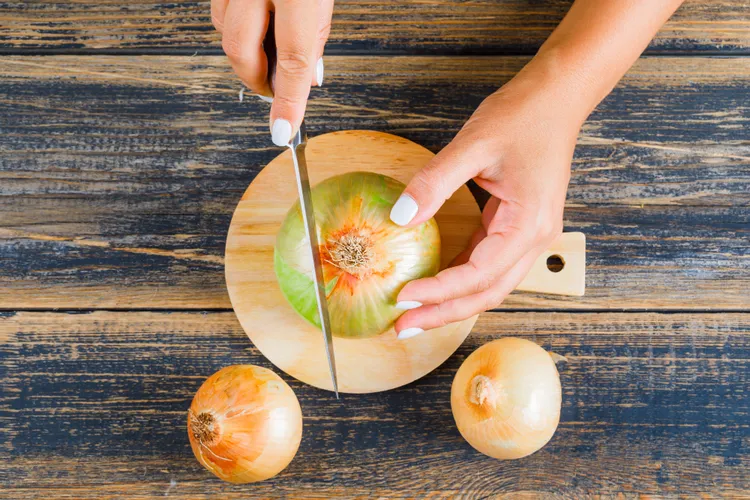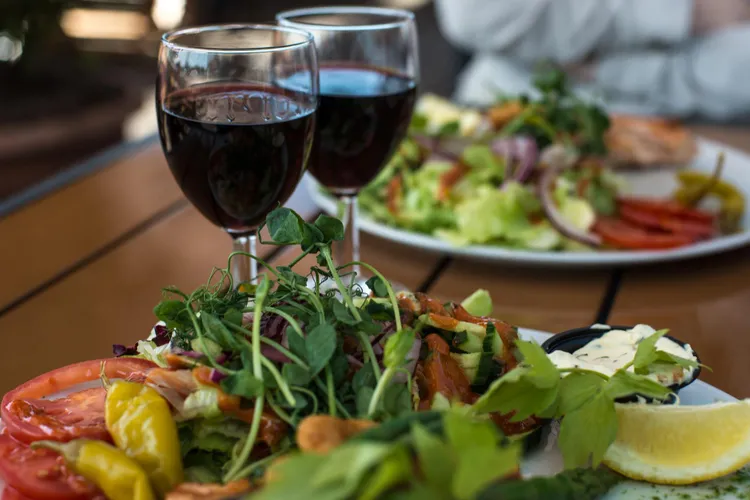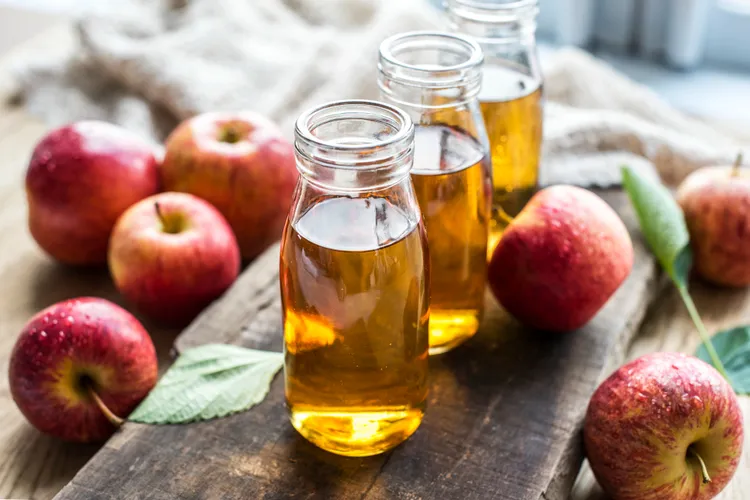Top 10 Foods to Eat for Clear Skin: Nourish Your Way to a Radiant Complexion
Clear, glowing skin is often seen as a reflection of overall health, and while skincare products play a role, what you eat can have a profound impact on your complexion. The foods you consume provide the building blocks for healthy skin cells, regulate inflammation, balance hormones, and protect against oxidative stress - all key factors in preventing acne, dullness, and premature aging. Whether you’re battling breakouts or aiming for a radiant glow, these nutrient-packed foods will help you nourish your skin from within. Let’s dive into the delicious path to clearer skin!

How Diet Affects Your Skin
Your skin is your body’s largest organ, and it’s influenced by:
- Inflammation: High-sugar or processed foods can trigger inflammation, worsening acne or redness.
- Hormones: Imbalances (e.g., from dairy or high-glycemic foods) can increase oil production, leading to clogged pores.
- Oxidative Stress: Free radicals from poor diet or environmental factors damage skin cells, causing dullness or aging.
- Nutrient Deficiencies: Lack of vitamins, minerals, or healthy fats can impair skin repair and hydration.
A diet rich in antioxidants, healthy fats, and anti-inflammatory compounds can combat these issues, promoting clear, vibrant skin. Below are the top 10 foods to support your skin health, along with why they work and how to enjoy them.
- Fatty Fish (Salmon, Mackerel, Sardines)
Why It Helps: Fatty fish are rich in omega-3 fatty acids, which reduce inflammation and keep skin hydrated by strengthening cell membranes. Omega-3s also regulate oil production, helping prevent acne. Fish like salmon also provide vitamin D and selenium, which protect against oxidative damage.
Science Spotlight: A 2020 study in Journal of Clinical Medicine found that omega-3 supplementation reduced acne severity by decreasing inflammation.
How to Enjoy:
- Grill salmon with lemon and herbs for a simple dinner.
- Add canned sardines to salads or whole-grain toast.
- Make a mackerel poke bowl with avocado and seaweed.
Aim for 2-3 servings (3-4 ounces each) weekly. Choose wild-caught fish to minimize contaminants.
- Avocados
Why It Helps: Avocados are packed with healthy monounsaturated fats, which keep skin supple and hydrated. They’re also rich in vitamin E, an antioxidant that protects skin from free radical damage, and vitamin C, which supports collagen production for firmness and elasticity.
Science Spotlight: A 2019 study in Nutrients linked avocado consumption to improved skin hydration and reduced signs of aging.
How to Enjoy:
- Spread avocado on whole-grain toast with tomato and a sprinkle of chili flakes.
- Add to smoothies with spinach and berries for a creamy texture.
- Use as a base for guacamole with lime and cilantro.
Include half an avocado daily. Pair with vitamin C-rich foods (e.g., citrus) to boost collagen synthesis.
- Berries (Blueberries, Strawberries, Raspberries)
Why It Helps: Berries are loaded with antioxidants like anthocyanins and vitamin C, which combat oxidative stress and inflammation that contribute to acne and aging. Vitamin C also supports collagen production, keeping skin firm and reducing fine lines.
Science Spotlight: A 2018 study in Journal of Agricultural and Food Chemistry found that berry antioxidants reduce skin inflammation and protect against UV damage.
How to Enjoy:
- Add a handful of berries to Greek yogurt or oatmeal.
- Blend into smoothies with kale and chia seeds.
- Snack on fresh or frozen berries for a low-calorie treat.
Aim for 1-2 cups daily. Frozen berries are just as nutritious and budget-friendly.
- Sweet Potatoes
Why It Helps: Sweet potatoes are rich in beta-carotene, a precursor to vitamin A, which regulates skin cell turnover and prevents clogged pores. Their antioxidants reduce inflammation, and their low glycemic index helps avoid blood sugar spikes that trigger oil production.
Science Spotlight: A 2021 study in Dermatology Reports linked beta-carotene intake to reduced acne and improved skin texture.
How to Enjoy:
- Roast sweet potato wedges with olive oil and rosemary.
- Mash with cinnamon for a nutrient-packed side dish.
- Add to soups or bowls with quinoa and greens.
Eat 1/2-1 cup 3-4 times weekly. Pair with healthy fats to enhance beta-carotene absorption.
- Nuts and Seeds (Walnuts, Almonds, Chia Seeds)
Why It Helps: Nuts and seeds provide zinc, selenium, and vitamin E, which reduce inflammation and protect against oxidative damage. Zinc, in particular, regulates sebum production and supports skin repair, making it a key nutrient for acne-prone skin.
Science Spotlight: A 2019 study in Journal of Dermatological Science found that zinc supplementation reduced acne severity in participants with low zinc levels.
How to Enjoy:
- Snack on a small handful (1 ounce) of walnuts or almonds.
- Sprinkle chia seeds on smoothies, yogurt, or salads.
- Make a trail mix with nuts, seeds, and a few dark chocolate chips.
Stick to 1-2 ounces daily to avoid excess calories. Choose unsalted, raw varieties.
- Leafy Greens (Spinach, Kale, Arugula)
Why It Helps: Leafy greens are rich in vitamins A, C, and E, plus antioxidants that reduce inflammation and protect skin from damage. Their folate content supports cell repair, and their fiber helps detoxify the body, promoting clearer skin.
Science Spotlight: A 2020 study in Skin Pharmacology and Physiology linked leafy green consumption to improved skin hydration and reduced redness.
How to Enjoy:
- Sauté spinach with garlic for a side dish.
- Blend kale into smoothies with mango and avocado.
- Toss arugula into salads with berries and nuts.
Aim for 2-3 cups daily, rotating varieties for diverse nutrients.
- Green Tea
Why It Helps: Green tea contains catechins, powerful antioxidants that reduce inflammation and protect against UV-induced skin damage. Its polyphenols also regulate sebum production, helping prevent acne, while L-theanine promotes relaxation, reducing stress-related breakouts.
Science Spotlight: A 2018 study in Journal of Investigative Dermatology found that green tea catechins reduced acne lesions and oiliness.
How to Enjoy:
- Sip 1-2 cups of green tea daily, hot or iced.
- Add a splash of lemon for extra vitamin C.
- Use matcha powder in lattes or smoothies for a concentrated dose.
Limit to 2-3 cups daily to avoid excess caffeine, which can stress the skin if overconsumed.
- Dark Chocolate (70%+ Cocoa)
Why It Helps: Dark chocolate is rich in flavonoids, antioxidants that reduce inflammation and protect skin from oxidative stress. It also improves blood flow to the skin, enhancing hydration and glow, while its low sugar content avoids acne-causing spikes.
Science Spotlight: A 2019 study in Nutrients showed that dark chocolate consumption improved skin hydration and reduced inflammation.
How to Enjoy:
- Snack on 1-2 squares of 70%+ dark chocolate.
- Add cocoa powder to smoothies or oatmeal.
- Make a chia pudding with unsweetened cocoa and almond milk.
Stick to 1 ounce daily and choose brands with minimal added sugars.
- Fermented Foods (Yogurt, Kefir, Sauerkraut)
Why It Helps: Fermented foods contain probiotics that balance gut microbiota, reducing systemic inflammation that can trigger acne. A healthy gut also improves nutrient absorption, ensuring your skin gets essential vitamins and minerals.
Science Spotlight: A 2021 study in Nutrients linked probiotic consumption to reduced acne and improved skin barrier function.
How to Enjoy:
- Choose plain Greek yogurt with live cultures and add berries.
- Sip kefir as a smoothie base or standalone drink.
- Add sauerkraut to sandwiches or bowls for a tangy crunch.
Aim for 1-2 servings daily, choosing unpasteurized or low-sugar options.
- Tomatoes
Why It Helps: Tomatoes are rich in lycopene, an antioxidant that protects skin from UV damage and reduces inflammation. They also provide vitamin C for collagen production and hydration, supporting a clear complexion.
Science Spotlight: A 2018 study in British Journal of Dermatology found that lycopene intake improved skin resilience to sun damage and reduced redness.
How to Enjoy:
- Add fresh tomatoes to salads or sandwiches.
- Roast with olive oil for a flavorful side.
- Blend into a gazpacho with cucumber and herbs.
Cooked tomatoes increase lycopene bioavailability. Aim for 1/2-1 cup 3-4 times weekly.
Why These Foods Work: The Science of Clear Skin
These foods promote clear skin through:
- Anti-Inflammatory Effects: Omega-3s, antioxidants, and probiotics reduce inflammation linked to acne and redness.
- Hormone Balance: Low-glycemic foods (e.g., sweet potatoes, berries) prevent insulin spikes that increase oil production.
- Antioxidant Protection: Vitamins C, E, and lycopene combat free radicals, preventing premature aging and damage.
- Gut-Skin Axis: Probiotics and fiber improve gut health, reducing systemic inflammation that affects skin.
- Hydration and Repair: Healthy fats and water-rich foods maintain skin moisture and support cell turnover.
Foods to Avoid for Clear Skin
To maximize results, limit:
- Dairy: Linked to acne due to hormones that increase oil production, per a 2019 study in Journal of the American Academy of Dermatology.
- High-Glycemic Foods: Sugary snacks, white bread, and soda spike insulin, worsening acne.
- Processed Foods: High in trans fats and sodium, which promote inflammation.
- Excess Alcohol: Dehydrates skin and increases inflammation.
Health Benefits Beyond Clear Skin
These foods offer additional benefits:
- Improved Energy: Nutrient-dense foods stabilize blood sugar, boosting focus and vitality.
- Better Gut Health: Probiotics and fiber enhance digestion and nutrient absorption.
- Reduced Aging: Antioxidants protect against wrinkles and sagging.
- Heart Health: Omega-3s and healthy fats lower cholesterol and blood pressure.
- Stronger Immunity: Vitamins and minerals support overall wellness.
How to Incorporate These Foods
- Start Your Day: Try a smoothie with berries, spinach, and chia seeds or avocado toast with tomatoes.
- Snack Smart: Keep nuts, dark chocolate, or yogurt on hand for skin-friendly snacks.
- Balance Meals: Combine protein (e.g., salmon), veggies (e.g., kale), and healthy fats (e.g., avocado) for lunch or dinner.
- Hydrate: Pair meals with green tea or water to support skin hydration.
- Meal Prep: Roast sweet potatoes or make a big salad with tomatoes and walnuts for easy meals.
- Dessert Swap: Replace sugary treats with berries or dark chocolate for a skin-loving sweet.
Lifestyle Tips for Clear Skin
Diet is key, but these habits amplify results:
- Stay Hydrated: Drink 2-3 liters of water daily to flush toxins and keep skin plump.
- Sleep Well: Aim for 7-9 hours of sleep to support skin repair and reduce stress-related breakouts.
- Manage Stress: Practice yoga or meditation to lower cortisol, which can trigger acne.
- Gentle Skincare: Use non-comedogenic products and avoid over-cleansing, which strips natural oils.
- Exercise Regularly: Boosts blood flow to the skin, delivering nutrients and oxygen.
Eat Your Way to Clear Skin
Clear skin starts from within, and these 10 foods - fatty fish, avocados, berries, and more - provide the nutrients to reduce inflammation, balance hormones, and protect your complexion. By prioritizing these foods and limiting triggers like dairy or sugar, you can achieve a radiant glow that reflects vibrant health. Pair your diet with hydration, sleep, and stress management for maximum impact.









